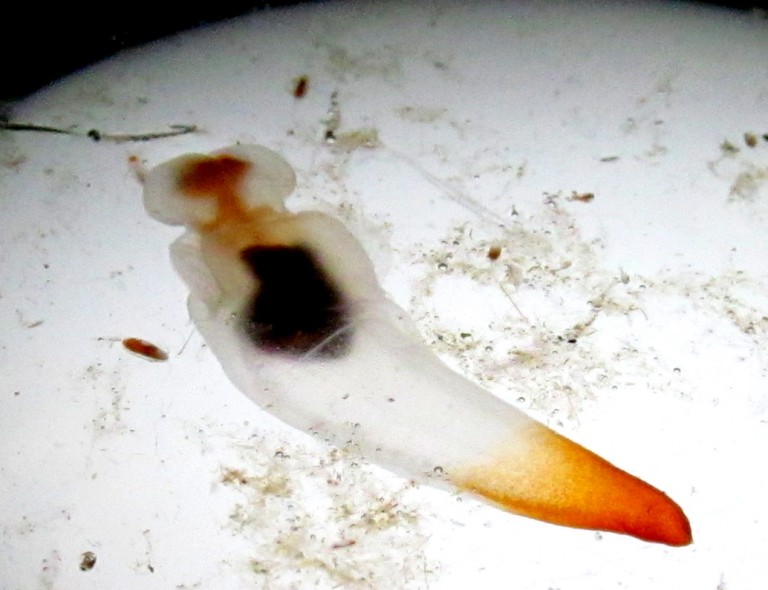
Researchers aboard the R/V Falkor, led by Chief Scientist Dr. Cabell Davis conducted a 1:30 p.m. plankton net tow that yielded a variety of species commonly found in North Atlantic waters, including Calanus glacialis, red copepods, and a gymnosome pteropod, sometimes called a “sea angel.”
The net tow is a regularly scheduled event aboard the first in a series of Falkor shakedown cruises. The team studying plankton sank the fine mesh net to a depth of 150 meters and drew it back to the surface at a rate of 30 meters per minute as the ship traveled at 1.5 knots. As the net passed through the ocean depth layers, it captured a wealth of microorganisms consistent with the group’s findings in previous net tows and VPRII launches throughout course of the first Falkor shakedown cruise.
“This was a pretty rich copepod haul,” Dr. Davis said.
Dr. Davis’ team is using the physical samples they collect from net tows to calibrate their recently upgraded Video Plankton Recorder (VPRII), a digital microscope capable of capturing 1,800 images per minute. They do so by placing the actual number of organisms they gather into a formula that takes into account data from a flowmeter attached to the net. The result is an estimate of how many organisms live in each cubic meter of water.
Weather permitting, net tows aboard the Falkor shakedown cruise will coincide with each VPRII launch and recovery.
